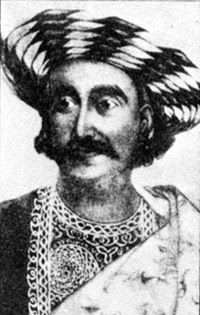After the disintegration of the Bahmani Kingdom (founded by Hasan Gangu Bahmani - a general of Delhi Sultanate in 1347 - Tughlaq rule) in the 16th century, several successor states emerged in the Deccan region of South India. These successor states included:
1. 1. The Adil Shahi
Sultanate of Bijapur: Founded by Yusuf Adil Shah, a former Bahmani general,
this state was based in Bijapur and lasted from 1490 to 1686. It was known for
its architectural marvels such as the Gol Gumbaz, Ibrahim Rauza, and the Jumma
Masjid.
2. The Qutb Shahi
Sultanate of Golconda: Founded by Sultan Quli Qutb Shah, a former governor of
Telangana under the Bahmanis, this state was based in Golconda and lasted from
1518 to 1687. It was known for its diamond mines, rich cultural heritage, and
monuments such as the Charminar, Mecca Masjid, and the Golconda Fort.
3. The Barid Shahi Sultanate
of Bidar: Founded by Amir Barid, a former Bahmani governor of Bidar, this state
was based in Bidar and lasted from 1492 to 1619. It was known for its fine
architecture and patronage of the arts, especially music.
4. The Nizam Shahi
Sultanate of Ahmednagar: Founded by Malik Ahmed Nizam Shah, a former Bahmani
governor of Junnar, this state was based in Ahmednagar and lasted from 1490 to
1636. It was known for its military strength and resistance against the Mughal
Empire.
5. The Berar Sultanate:
Founded by Fathullah Imad-ul-Mulk, a former Bahmani governor of Berar, this
state was based in Ellichpur and lasted from 1490 to 1574. It was known for its
strategic location and military power.



